Leonardo Da Vinci has long been associated with the golden ratio. This association was reinforced in popular culture in 2003 by Dan Brown’s best selling book “The Da Vinci Code.” The plot has pivotal clues involving the golden ratio and Fibonacci series. In 2006, the public awareness of the association grew when the book was turned into a movie starring veteran actor Tom Hanks. Da Vinci’s association with the golden ratio, known in his time as the Divine proportion, runs much longer and deeper.
Da Vinci’s illustrations appear in Pacioli’s book “The Divine Proportion”
Da Vinci created the illustrations for the book “De Divina Proportione” (The Divine Proportion) by Luca Pacioli. It was written in about 1497 and first published in 1509. Pacioli was a contemporary of Da Vinci’s, and the book contains dozens of beautiful illustrations of three-dimensional geometric solids and templates for script letters in calligraphy. The original manuscript can be viewed online at http://issuu.com/s.c.williams-library/docs/de_divina_proportione. As of this writing in 2014, no English translation is available.
In the book, Pacioli writes of mathematical and artistic proportion, especially the mathematics of the golden ratio and its application in art and architecture. Some geometric solids, such as dodecahedrons and icosahedrons, have inherent golden ratios in their dimensions and spatial positions of their intersecting lines. Other examples of golden ratios in the illustrations include the one architectural illustration in the book and the one script letter (G) that is not divided horizontally at its midpoint.
On the first page of De Divina Proportione, Pacioli states that his intent is to reveal to artists the secret of harmonic forms through the use of the Divine proportion, describing his writing as:
A work necessary for all the clear-sighted and inquiring human minds, in which everyone who loves to study philosophy, perspective, painting, sculpture, architecture, music and other mathematical disciplines will find a very delicate, subtle and admirable teaching and will delight in diverse questions touching on a very secret science.
Golden ratios / Divine proportions appear in Renaissance art in paintings of religious importance
Da Vinci’s use of the Divine proportion is evident in some of his own works, even before his collaboration with Pacioli. The paintings I reviewed suggest that the use of the Divine proportion in paintings among Renaissance artists may have been more common in paintings of special religious significance.
It appears that Da Vinci applied Divine proportions in his rendition of “The Annunciation, painted in about 1472-1473. An exact determination is difficult with 100% certainty because various images available of this painting are cropped slightly differently. It appears to be the basis for the dimensions of the walls and entry way of the courtyard, as well other elements of the composition, as shown in the photos below. Other golden ratios can be found, but to avoid any perception that this is arbitrary those shown are based on very distinct features of the painting. Botticelli also used the golden ratio in several renditions he created of “The Annunciation” between 1485 and 1493. Michelangelo used it in “The Creation of Adam” in 1510.
- Golden ratios based on width of painting canvas, using Florence Museum image. Note alignment of vertical walls and courtyard entry.
- Golden ratios from left side to precise center of canvas, which aligns with the mountain peak. Note positioning of angle face and wings, as well as position of the one tree in the background that’s different from all the others.
- The Annunciation
- Variation on this image shows divine proportion position of the entry to the courtyard
- The ornamentation of the table is at the golden mean of its width
- The peaks of the mountains in relation to the top of the canvas are in golden ratio proportion
Da Vinci’s “The Last Supper” has many clear examples of Divine proportions
Perhaps one of the best illustrations of its use is in “The Last Supper,” painted between 1494 and 1498. Various design and architectural features show very clear golden ratios. Some believe that even the positions of the disciples around the table were placed in divine proportions to Jesus.
- The Last Supper by Leonardo da Vinci
- Last Supper detail showing golden ratios
- Markings on the shield are golden ratios of its width
- Small shield is a golden ratio of the width of its enclosure
- From table top to ceiling, Jesus is at the midpoint and the top of the windows is at the golden ratio
- Center of table is a golden ratio to its sides
Da Vinci’s Mona Lisa and the Golden Ratio
One of Da Vinci’s most famous paintings is “La Jaconde,” the Mona Lisa. This painting was begun in about 1503 and work on it continued for years. It has similar composition to “Christ as Savior of the World.” The application of the Divine proportion in this painting is the most subject to interpretation and debate. Unlike “The Last Supper” and “The Annunciation,” the Mona Lisa has few straight lines or architectural elements to use as references points in making a determination. It’s possible to find golden ratios in the Mona Lisa, but they’re not as definitive. If you do a Google search for Mona Lisa golden ratio you’ll also find some very creative interpretations of golden ratios in the Mona Lisa. Many of these are not easily supported as representing Da Vinci’s intent because their starting points, position and size are somewhat arbitrary and inconsistent.
There are, however, observations that can be made about the Mona Lisa. The image on the left below shows that golden ratios from the sides of the canvas. This approach reveals no golden ratios from the canvas edges that align with key elements of the composition. There may still be golden ratios here though. The width of her face is very close to a golden ratio of the width of the canvas. This is illustrated by the yellow rectangle of the same dimensions. In the image on the right, we see that her eye is rather precisely aligned with the center of the canvas. Golden ratio lines from the center of the painting to the sides of the canvas align nicely with the width of her hair. There may also be golden ratios in the vertical dimensions of the painting. As with the painting of Christ above, the most prominent elements of the composition are her head, the garment neck line and her arm. These also show golden ratios in their positioning. So, while this is not as definitive as the straight lines of architectural elements in other paintings, a reasonable case can be made that the Mona Lisa also embodies intentional golden ratio proportions in its composition. Given Da Vinci’s prior usage, it would not be unusual or unexpected for him to have applied it here as well.
- Golden ratios from sides of canvas
- Golden ratios from center of canvas
Analysis of Da Vinci’s Vitruvian Man
Another of Da Vinci’s most famous works is that of the Vitruvian Man, created around 1490. The official title of the drawing is “Le proporzioni del corpo umano secondo Vitruvio,” or “The proportions of the human body according to Vitruvius.”
Wikipedia states,
The drawing is based on the correlations of ideal human proportions with geometry described by the ancient Roman architect Vitruvius in Book III of his treatise De Architectura. Vitruvius described the human figure as being the principal source of proportion among the Classical orders of architecture. Vitruvius determined that the ideal body should be eight heads high. Leonardo’s drawing is traditionally named in honor of the architect. This image demonstrates the blend of art and science during the Renaissance and provides the perfect example of Leonardo’s deep understanding of proportion.
The Wikipedia article describes how Vitruvio measured the entire human body in integer fractions of the height of a man. Examination of the Vitruvian man illustration shows that the guide lines drawn by Da Vinci on the body appear to be based on integer fractions of the height, which is also equal to its width. The illustration below shows the height/width divided into 4ths, 5ths, 8ths and 10ths. This aligns with the guide lines drawn horizontally at the collar bone, chest, genitals and knee. They align horizontally with the guide lines drawn at the wrist, elbow and shoulder.
Examination supports that Vitruvian Man was drawn to represent the fractional measures put forth by Vitruvius and is not based on the golden ratio. As discussed on the Great Pyramid page, however, irrational numbers like Phi can be closely approximated with integer fractions. So while Vitruvian Man may produce a very well proportioned human body, it seems unlikely that the human form would be based on a system of halfs, 4ths, 6ths, 7ths, 8ths and 10ths when we find constant rates of fractal expansion in the proportions of other living organisms. Other studies and approaches to measuring the human body express it just as well or better in golden ratio, which is better aligned to the growth relationships found in nature. See the Face, Body and Hand/Foot pages for illustrations.
The Vitruvian Man does have some dimensions that align with golden ratios. These are shown in the second drawing below and include the following points:
- In the distance from the Da Vinci’s guide line drawn at the hairline to the guide line at the foot, the following are all at golden ratio points:
- the navel, which is most often associated with the golden ratio of the total height and not the height of the hairline
- the guidelines for the pectoral nipples
- the guidelines for the collar bone
- In the distance from the Da Vinci’s guide line drawn at the elbow to the guideline at the fingertips
- the base of the hand is at a golden ratio point.
Golden ratios are easy to identify and apply with simple tools
Divine proportions are quite easy for an artist to apply. All it takes is a simple two prong gauge that pivots at its golden ratio point. You take a measure on one side and then simply flip it around to get the golden ratio of that measure. Another popular design is the three prong gauge. In this case the golden ratio appears in a single line. Tools like this would provide very good estimates of golden ratio points, but are of course only as accurate as the precision of placement of their pivot points. They would not, in general, be as accurate as the pixel level analysis of those images as done in this article. This would explain some of the minor variations where the composition lines on a painting do not match the digital grid to the pixel. In most cases, however, the alignment is quite good and indicates the likeliness of the artist’s intent to apply a golden ratio.
Not every Da Vinci’s painting shows clear evidence of golden ratios
If you review all of Da Vinci’s paintings, you will likely not find clear evidence of the golden ratio in many of them. He may have used it in many more paintings than those shown above. Many paintings though do not have distinct reference lines like those in these paintings, so it is difficult to support. While golden ratios may exist in elements of his other paintings, finding them after the fact can be subject to creative interpretation, and thus can be arbitrary and incorrect. I’ve tried in this article to provide examples where its application seems so clear that most reasonable people would see its intentional application by Da Vinci as verifiable and true. History has shown though that there will continue to be differences in viewpoints. If you have doubts, my recommendation is to do the analysis for yourself with high resolution images and a tool like PhiMatrix that creates golden ratios, custom ratios and rulers with pixel-level accuracy.
References:
http://en.wikipedia.org/wiki/List_of_works_by_Leonardo_da_Vinci
http://en.wikipedia.org/wiki/De_divina_proportione
http://en.wikipedia.org/wiki/Luca_Pacioli
http://en.wikipedia.org/wiki/Vitruvian_Man
http://www.newworldencyclopedia.org/entry/Luca_Pacioli
http://www.codicesillustres.com/catalogue/de_divina_proportione/
http://books.google.com/books?id=bUARfgWRH14C&pg=PA131#v=onepage&q&f=false
http://books.google.com/books?id=bUARfgWRH14C&printsec=frontcover#v=onepage&q&f=false
http://www.goldenmeancalipers.com/blog/page/2/
http://cdn5.fontspring.com/fnt_imgs/a1/f3ee/9718705fe92afbca1a1ec5b769/sd-720.png

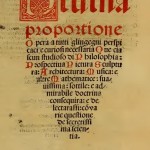
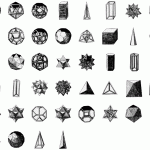
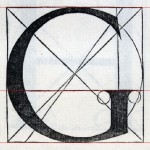
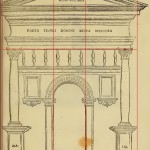
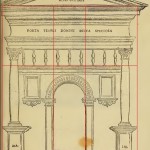
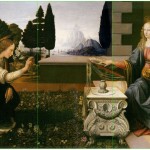
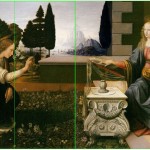
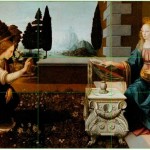
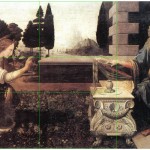
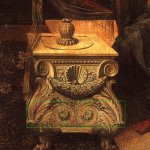
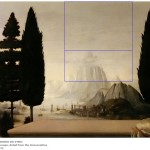
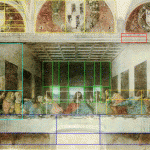
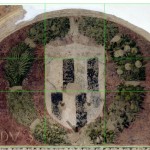
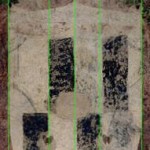
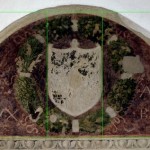
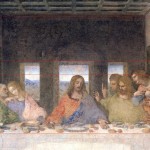
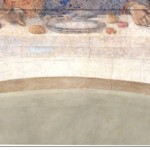
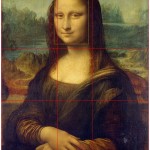
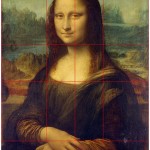
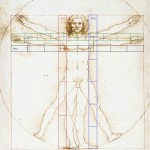
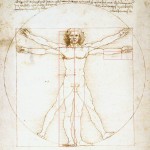
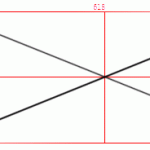
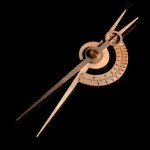
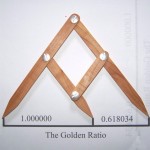


Good stuff! Maybe a little more clarification on the relationship between Da Vinci and Pacioli, and the Catholic Church. Pacioli was the author of the Divine Proportion. Da Vinci was just the illustrator, and the pupil. Pacioli was the first to write a book on Chess, and is credited with being the “Father of Double-Entry Accounting’. Pacioli was the Master, and a Franciscan. The Catholic Church has had knowledge of this ‘secret science’ for over 500 years. Does anyone know of an instance where any Church has shouted, ‘The Divine Proportion”, from any rooftops, in any language? Or how about any Architectural organization or publication getting up on any of their personally designed rooftops to spread the word to anybody? And don’t forget any fraternal orders, or educational institutions, or international corporations. How come everyone thinks Da Vinci, and not Pacioli? More importantly, why do dozens and dozens of docents across the world where the Leicester Codex has been shown, still tell visitors that Leonardo took the name, of Vinci, when it’s so obvious that he chose to be known as ‘Divine’, and not just as another guy from wine country! (Oh, by the way, Leicester is at 1’6″18 W. Longitude, and Bill Gates paid $30,802, 500 for it. (Maybe if it was $38,196,602 with tax, everyone would sit up and take notice, and start shouting its’ greatness until the rafters start shaking!)
Thanks much, Peter. The article above does make it clear that Pacioli was the author and Leonardo was the illustrator.
On Leonardo’s name, combining “davinci” to interpret it as “divina” is an interesting rearrangement of the letters, but “da Vinci” literally means from the city of Vinci, where Leonardo was born. See http://arthistory.about.com/od/davincicode/f/leosname.htm. The translation of the word vinci itself is related to conquer or vanquish. It is indeed unfortunate that the “secret science” Pacioli wanted to share in his book still remains more of a secret than it should.
Very interesting observation about Leicester. I checked it out with Google Maps and found another curiosity: Spinney Park is almost at exactly and features a walkway with two circles in golden ratio proportion to one another. See https://www.goldennumber.net/wp-content/uploads/Spinney-Hill-Park-Leicester-UK-1-6-18-W-latitude-golden-ratio-walkways.jpg.
He wasn’t actually born in Vinci. He was born in his maternal grandfather’s house in Anchiano, 3 km [1.618 nautical miles] outside Vinci. Considering that his father never really acknowledged him, and he was forever having to deal with all his legitimate half-siblings as the bastard son, why would practically the only guy in history to be known for where he came from choose the place that caused him so much grief as his name for all eternity. Isn’t it MUCH MORE PLAUSIBLE, that he chose ‘of Vinci’, with the idea of the blood and then the wine substitute in church rituals, from which the word ‘Divine’ originates? In other words, why would one of the brightest stars of all time, want to be known as the great Leonardo (lion) of the town of Vinci, that actually held nothing but bad memories for him? Why not be known forever and always as the Divine Leonardo, since that is what he truly loved; The Divine Proportion?
Ah , a person can only grow from pain , it makes you stronger & I could see why he would , it was a hard time in his life & he overcame those obstacles, but never forgot where he came from , it maybe kept him grounded , however you aslo make a very valid point !!
So, what does that mean? Leicester is at 1’06″18 W. like I said, or is it 1’13 W. as you stated in an earlier reply. Does it mean perhaps, that you’re finally starting to see what I’ve been talking about and proving over and over with my graphic organizers? Like the relevance and real essence of Nashville, for example?
Hi Peter. For replies that are personal in nature, please send a valid email address via the contact page at https://www.goldennumber.net/contact/. I’ve tried sending emails to your msn.com address and but they are bouncing back as undeliverable. Thanks.
This is fascinating, I’ve lived within two miles of Spinney Hill Park for my entire life and I’ve never heard of any mention of the Golden Ratio, Fibonacci or Da Vinci. I also briefly looked into the history of the park and can’t find anything. I do believe that the park was recently renovated to include those paths so I could maybe speak to the Leicester council and find out who designed it.
Thanks for bringing this to my attention, please share anything else you find on this topic.
Hello Sam. Yes, please see if you can uncover any additional information on the origins of the design and let me know what you find out. Regards, Gary
Charles Nicholl’s biography of Leonardo states that it remains a possibility that he was born in the house of da Vinci immediately outside of the castle walls in Vinci’s first suburb and that it is probably a mix of supposition and tradition (for a bastard son) that he was born instead 2 miles north at the hamlet of Anchiano. But this house was bought by Leonardo’s father, Ser Piero da Vinci, some thirty years after Leonardo’s birth. The date of the birth is certain, recorded by his grandfather Antonio da Vinci as is his baptism by the next door neighbour, priest of Santa Croce parish in Vinci. Thus it is also likely that this took place in Vinci the day after Leonardo’s birth. There were ten godfathers present (compared with six for his father’s birth). His mother, Caterina, a ‘serving girl’ is (probably) married off to Accattabriga to allow Ser Piero to marry his betrothed Albiera, a rich notary’s daughter. Yet grandfather Antonio in 1457 still lists five-year-old Leonardo among his dependants. This may be due to dowry payment as it would be likely for the child to remain with the mother in his earliest years. But, as Ser Piero’s first wife was childless, he may have kept closer contact with his only son than other commentators have supposed. Plainly when his talent for art surpassed his potential for notary abilities (limited by illegitimacy) Ser Piero has the 13 or 14 year-old Leonardo apprenticed to Verrocchio, with best artists studio in Florence. There is no indication of total abandonment by the da Vinci’s in this bare evidence and no reason for Leonardo to reject the name of his father. Speculation about his desire for ‘davinity” is hedding way off track.
For me vitruvian man is all about “squaring the circle”
Great article! Thank you! I am writing a grad theological research paper paper based upon Romans 1:19-23, how creation reveals the creator, where I cite your work. “The KJV gives an interesting twist to this verse in the English language because it seems interesting that in three versions we see God showing something, or making something obvious externally, where the KJV it appears that God makes something obvious internally, as in perhaps, a revelation by Holy Spirit to the human spirit. Makes me think about the potential difference between seeing a picture or reading something with our natural eyes, as compared to seeing, knowing or understanding something internally. Clearly, two people can look at the same picture, and see it totally differently.
An example of this might be the concept of ‘the golden ratio’ in art. I look at Da Vinci’s famous painting entitled ‘The Last Supper’, and think: what a beautiful painting. Yet, someone schooled in art, mathematics and science, might look at the exact same painting, and view it completely differently, because within themselves, they have understanding of proportions that reveal the majesty of the master artist to them.
Could this not be a possible thought expressed here in this passage: all people see the sea, the sky, the creation – yet some see the mind of the master who created it all, and have revelation within themselves.
Thanks, Chris. There’s no doubt that people can look at the very same thing yet “see” it very differently. Our life experiences and beliefs filter everything we see. I have another site which discusses this in several articles, including http://www.snapshotsofgod.com/magic-eye/ and http://www.snapshotsofgod.com/contact-carl-sagan-reveals-god/. Leonardo described it, “There are three classes of people: those who see. Those who see when they are shown. Those who do not see.” You might also like my video on his Salvator Mundi at https://www.youtube.com/v/nXDmAtTJ6JY?version=3&vq=hd1080.
Many thanks for the interesting and approachable site specifically on the Divine Proportion. Might be worth a brief mention of interest in other irrational, apparently magical numbers in the medieval period, such as the use of square roots of 2 and 3 in architecture? (Square root of 2 is useful in doubling areas, e.g. European paper sizes.) A double square ground plan crops up from Romanesque churches onwards, possibly thanks to Old Testament references to the size and proportion of the Tabernacle, thus especially appropriate to a holy Judaeo-Christian place. Are there any medieval texts (rather than later Freemasonry) referring to irrational numbers generally? (Pacioli is a bit late for my purposes.) I’m no expert; the few architectural structures I’ve looked at tend to use root 2 rather than Golden Proportion, but that may be down to my lack of examples. Seems to me that, not only was the Golden Proportion observed to be particularly attractive to the human eye, irrational numbers were regarded as appropriate for holy places? You have the Taj Mahal and at least one Greek temple.
The ultimate ‘Analysis of Da Vinci’s Vitruvian Man’, discloses the Leonardo’s small and bigger mistakes (part two – desktop monitor is advisable).
https://golden-ratio.eye-of-revelation.org
With an interesting evidence of the Golden Proportion of the human fingers’ bones, which would satisfy the best Vitruvius aims (page 52).
A fascinating book. Explains the racial differences in the face but still races fall within the Golden Ratio.
To which book are you referring? Is it “The Golden Ratio – The Divine Beauty of Mathematics?” It shows what you described.
Its most interesting when we notice the middle column of tiles on the checker floor are a different size than the rest. Any explanation as to why that row is intentionally out of proportions to the other titles when everything else is precise? I feel there is also something to be said that the black and white floor is widely recognized as a hallmark of enlightenment. Younger people would call this an “Easter egg”. That said, could there be some significance to why this row follows a different size scale than that of the other tiles?